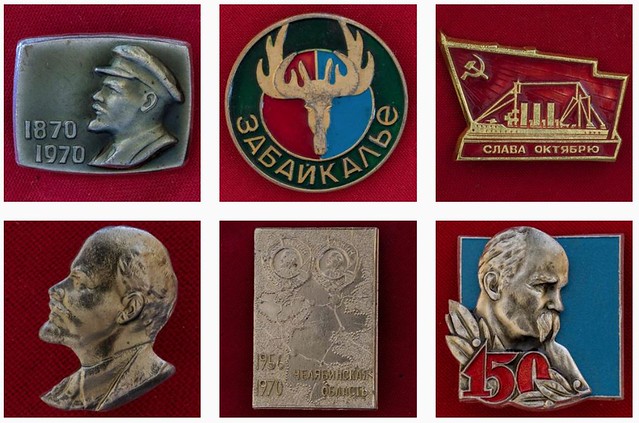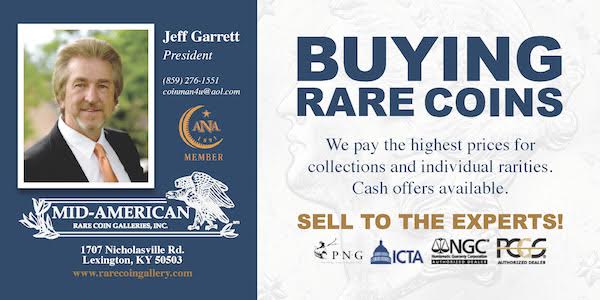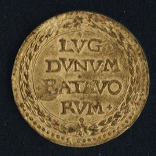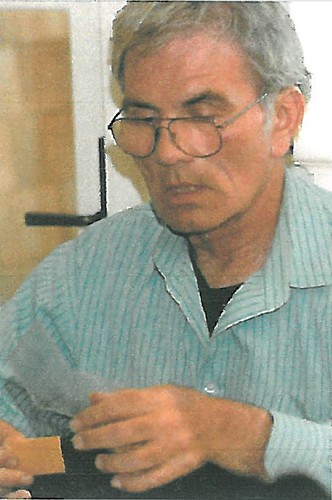
PREV ARTICLE
NEXT ARTICLE
FULL ISSUE
PREV FULL ISSUE
NOTES FROM E-SYLUM READERS: JULY 14, 2019Znachki Photos
I saw your posts on znachki and it prompts me to send you the link to my Instagram account, where I'm posting one a day from my collection.

The site is devoted exclusively to Soviet pins, mass-produced for all occasions in the 1960s, '70s, and '80s. Thanks. Znachki are colorful collectible Russian medallic propaganda pinbacks. -Editor
To read the earlier E-Sylum articles, see:
More on the Paper Emergency Coins of Leiden
There also exists at least two and maybe more larger ones, the last one I saw and handled, about 40 years ago. I had two, and I think they were as large as a silver dollar or Thaler sized coin. These were struck on Bible pages as this was the only thing available for these small denomination coins. There were other coins struck for the siege in silver, but this discussion is about the paper issues only. It is my understanding that Bibles of this period were made by a process known as illumination in which the type was large, some letters were not in black and the pages themselves were quite thick, the thickness of the coins struck. All were counter stamped with a lion, the mark of the province of Holland. In my humble opinion, although of paper, these issues were made to circulate as coins. The people of Leyden (about 25 miles from Amsterdam, although I have not been there) needed coinage for everyday commerce while under siege from the Spanish. Certainly a very interesting item. I will always be just a student as NO ONE knows it all. And I have always found square coins (and coins made out of paper) to be neat. Hence , when the internet started, my domain, is Klippes.com
Bouke Jan Van der Veen writes: I did some internet searchng on American research in Leiden coins 1574. Very interesting, a lot of attention ! I came across another error ; the countermark applied was not "By order of Prince William of Orange ... " etc. That was the countermark of 1571/72 (tax to finance the war), but they used the same die to countermark the paper coins in Leiden 1574 ; the small die with the lion in a circle of pearls. The reason is very obvious : this countermark was still kept and available at the City Hall !! This countermark was not for tax but only to show the users of the paper coins that they were genuine and no falsifications which were discovered shortly after distribution. It is also not true that the countermark was applied after the siege to make the coins invalid.
Thanks, gentlemen. -Editor
To read the earlier E-Sylum article, see:
Appreciating Robert Martin
A magazine came to the house addressed to Robert last week titled "COINage". This morning I took the time to educate myself for the reason of the cover "Ultimate Secrets of the Coin Auctions" and found on page 22 a photo of the late Walter Breen who is in a section of one of your articles with a photo named "Midnight Sale" along with Uncle Bob. I did read this article shared with the family back in December 2017 and again today after reading through the magazine noted above. I was taken aback by the testimonials that Randy Clark, Mike Packard, Anthony & Mary Ann Terranova, Roger Siboni and Jack Howes wrote. Today it hit me that Bobby was very well liked by many and a huge educator in the coin world. This hobby of Uncle Bobby's is completely like a puzzle being put together. I just wanted to share with you that we as a family appreciate the knowledge shared of Uncle Bob's coin life and a special Thank You to those noted above for sharing their memories
I didn't have the pleasure of meeting him since I don't actively collect colonials. But Robert Martin was known and respected at the highest levels of the hobby. -Editor
To read the earlier E-Sylum articles, see:
Foreign-Born People on U.S. Paper Money
The Heller article you referenced uses the phrase "specifically named people". Under that criteria, the three remaining folks are probably (Englishman) General John Burgoyne (1863 $500 National Bank Note), (Spaniard) Hernando DeSoto (1918 $500 Federal Reserve Note) and (Englishman) Sir Walter Raleigh (1875 $2 National Bank Note). There are numerous other non-Americans depicted on US currency, including King James I and Queen Anne, Brigadier General William Phillips and Lt. Gen. Baron Friedrich Adolph Riedesel, but they are not "specifically named" on the notes themselves, but rather identified from the original source of the vignettes in which they appear.

Surrender of General Burgoyne
Great question, and great answer as well. Answering these types of questions is often far more nuanced than it seems at first glance. There are often many details to be parsed and examined. Thanks! -Editor
To read the earlier E-Sylum article, see:

Wayne Homren, Editor The Numismatic Bibliomania Society is a non-profit organization promoting numismatic literature. See our web site at coinbooks.org. To submit items for publication in The E-Sylum, write to the Editor at this address: whomren@gmail.com To subscribe go to: https://my.binhost.com/lists/listinfo/esylum All Rights Reserved. NBS Home Page Contact the NBS webmaster 
|

